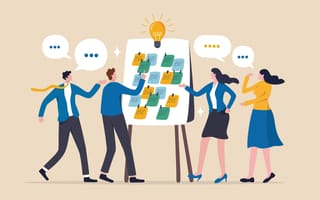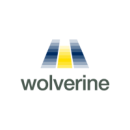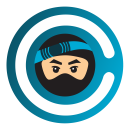Why simply acquire knowledge when you can become it instead?
That’s how Wolverine Trading perceives the idea of continuous learning, according to Software Engineer Jordan Pezen. Rather than view learning solely as a path toward self-improvement, the firm considers it a critical component of its architecture, which is why it encourages its engineers to “become the living embodiment of knowledge.”
“We kindle a culture of owners who understand, create and share,” Pezen said.
The firm’s engineers are empowered to dive deeply into their passion, whether that’s related to mathematics or hardware, and pass it along to their peers to cultivate a culture rooted in universal knowledge.
NinjaHoldings takes a similar approach to continuous learning on its engineering team. Vice President of Engineering Geoff Lubold said that the company’s engineers have opportunities to attend industry conferences, prototype and experiment with new technologies, and attend regular knowledge-sharing sessions.
“Together, these practices create an environment where engineers are equipped and motivated to build scalable, thoughtful solutions that align with both user needs and business objectives,” he said.
For the engineering teams at Wolverine Trading and NinjaHoldings, creating a culture of learning not only makes it easier for engineers to build new skills; it maximizes the impact they have on each other and the business as a whole.
Below, Pezen, Lubold and engineering leaders from Invenergy and UncommonX share how their teams foster a focus on continuous learning, how this impacts their work and the advice they’d offer others interested in enhancing their own team culture.
Invenergy develops and operates sustainable energy solutions related to wind, solar and natural gas power.
How does your team cultivate a culture of learning, whether that’s through hackathons, lunch and learns, access to online courses or other resources?
We take advantage of both internal and external learning opportunities. Externally, we occasionally bring in technical experts to provide targeted training in areas where we want to strengthen our expertise. More often, we leverage industry organizations, professional societies or national labs, which organize conferences, seminars and other training sessions. I encourage each employee to attend at least one or two of these events each year to stay on top of industry advancements.
Internally, Invenergy offers a robust training platform with a wide range of on-demand content. Managers can assign specific courses, which is especially valuable during a new hire’s first year to help them build both technical and organizational knowledge. At the team level, learning often happens in a more grassroots way. Most weekly meetings include a knowledge share segment, where team members take turns presenting something new they’ve recently learned to their colleagues. This not only champions the learning process but also ensures that valuable insights are shared widely across the team.
How does this culture positively impact the work your team produces?
One of our most impressive projects came from a collaboration between our wind turbine blade reliability team and our data science group. Partnering together, we built a machine learning model that processes images to detect and categorize damage. This represented a major leap from our previous process, improving efficiency, accuracy, and consistency. The project won Invenergy’s Annual Innovation Award and showcased a culture that values knowledge-sharing and cross-functional collaboration.
That same culture drives innovation in enterprise risk and safety. Many meetings begin with a safety topic, giving team members a chance to share newly identified concerns or hazards. At a minimum, these discussions heighten individual awareness, helping prevent accidents. In other cases, they spark entirely new projects. For example, after hearing about a field incident involving tagline ropes, an engineer helped develop a hands-free tagline device. Just months later, we had a working prototype and another win: Invenergy’s Annual Safety for Life Award. Yes, we like to rack up awards in our group!
What advice would you give to other engineers or engineering leaders interested in creating a culture of learning on their own team?
First, create an environment where people can “fail softly.” Innovation requires experimentation, and experimentation comes with the possibility of failure. The key is making those failures quick, safe and instructive so your team learns without losing momentum.
Be humble and make it clear that no one, including the leader, has all the answers. In the process of lifelong learning, we are all both students and teachers. When team members help you or others learn something new, acknowledge and commend their efforts. Recognition reinforces the behavior you want to see and makes learning a shared value rather than an individual pursuit.
Wolverine Trading specializes in derivatives valuation, trading and value-added order execution across global equity, options and futures markets.
How does your team cultivate a culture of learning, whether that’s through hackathons, lunch and learns, access to online courses or other resources?
Our team’s culture of learning is deeply embedded in our philosophy of growth. Our core belief is that context gives form to intangible information. The best way to learn is to do. This belief defines our structures.
Learning is best done through meaningful work. Rather than isolate education, such as workshops, we embed learning within the work. Each day is an opportunity to expand our reach, technically, organizationally or philosophically. Everyone has some intrinsic interest that motivates them to explore beyond the task. An employee’s interest is a well of initiative to be tapped. Our strategy is to identify those interests and align them with areas of meaningful ownership.
Shared information allows collaboration. Teaching reinforces personal understanding and elevates others. Developers acquire ownership for more than operational efficiency. Ownership creates passion. Teaching provides an outlet to express that passion and foster passion in others. We prefer human documentation. We encourage employees to share domains. We build redundancy in knowledge. Shared ownership allows many people to collectively represent knowledge rather than simply execute as individuals.
How does this culture positively impact the work your team produces?
Interest-driven ownership pays off in several ways. It allows people natural initiative because they work on things they care about. It results in faster and stickier learning since there is an emotional investment. And it creates long-term retention of employees and their knowledge because they experience satisfaction through the excellence of their domains.
Software engineers create tools to remotely diagnose issues, bridging the gap between developer and user. Those passionate about mathematics analyze graph layout algorithms to create the perfect look. Those interested in hardware optimize machine configurations for software. Others bring languages, protocols and technologies to architect workflow pipelines and efficient practices. Each project brought by a developer is pushed forward as an expression of passion.
Ultimately, our teams believe in building individuals who own, who grow and who propagate their knowledge to anyone willing — or doomed — to listen. We kindle a culture of owners who understand, create and share. Our employees become the living embodiment of knowledge. Learning is more than personal self-improvement; it’s the foundation of our architecture.
“Learning is more than personal self-improvement; it’s the foundation of our architecture.”
What advice would you give to other engineers or engineering leaders interested in creating a culture of learning on their own team?
Most important is to recognize that a team reflects its company. Culture grows from the architecture of the larger organization. Every company contains the potential for learning. Encourage knowledge-sharing. This doesn’t require formal presentations. Make space for organic conversations. Normalize the idea that everyone has something to teach and learn, regardless of experience. Teach constructive conversation and nurture it by example. Employees need to feel safe asking questions, challenging assumptions or stating what they don’t know. This safety is the bedrock of learning. Without it, people become risk-averse, which sounds a death knell for innovation.
Present the bigger picture. Employees are motivated to care when they understand why something matters. It creates satisfaction to see their contribution to the business. Take time to show the forest as well as the trees. Context leads to insight, and insight leads to innovation. Create people who yearn for knowledge so they can build and share. When you do that, learning stops being a task and instead becomes part of life. A culture of learning can create unconstrained opportunities for individual growth and for the company.
NinjaHoldings’ suite of digital banking and lending products are designed to help everyday Americans take control of their finances.
How does your team cultivate a culture of learning, whether that’s through hackathons, lunch and learns, access to online courses or other resources?
At NinjaHoldings, we foster a strong culture of continuous learning and innovation. Engineers are encouraged to attend industry conferences to stay current and bring back new ideas. We promote collaboration by supporting prototype development and experimentation with emerging technologies to solve real business challenges. Our teams regularly share knowledge through lunch-and-learn sessions, engineering demos and technical deep dives, creating a strong culture of open communication. Each engineer also has access to a dedicated learning budget that can be used for online courses, technical conferences or other educational resources to deepen their expertise. These efforts ensure learning is a core part of our daily work, empowering engineers to stay curious, level up their skills and drive meaningful impact.
How does this culture positively impact the work your team produces?
Our culture of continuous learning directly improves the quality and innovation of our work. For example, by attending industry conferences, engineers gain exposure to emerging practices that inform architectural decisions and tooling choices. The ability to prototype and experiment with new technologies has led to more efficient solutions, such as improving our internal loan servicing tools and streamlining deployment workflows. Regular knowledge-sharing sessions foster cross team collaboration and reduce silos, helping us avoid redundant efforts and align more quickly on best practices. The dedicated learning budget empowers engineers to deepen their expertise in areas that directly support project goals, whether it’s cloud infrastructure, data engineering or front-end performance. Together, these practices create an environment where engineers are equipped and motivated to build scalable, thoughtful solutions that align with both user needs and business objectives.
“Regular knowledge-sharing sessions foster cross team collaboration and reduce silos, helping us avoid redundant efforts and align more quickly on best practices.”
What advice would you give to other engineers or engineering leaders interested in creating a culture of learning on their own team?
Focus on making learning a visible and supported part of your team’s culture. Set the example by sharing what you are learning and being open about what you do not know. Give engineers the time and space to explore new ideas, even if they are not tied to a roadmap item. Create opportunities for sharing. Lunch-and-learn sessions, demos or even informal Slack threads can go a long way. Provide a learning budget and encourage your team to use it for courses or conferences that genuinely interest them. Most importantly, reward growth, not just delivery. When people see that learning is valued, they will feel more comfortable taking initiative, asking questions and pushing boundaries in ways that lead to better outcomes for everyone.
UncommonX’s exposure management platform is designed to offer IT teams complete visibility across networks.
How does your team cultivate a culture of learning, whether that’s through hackathons, lunch and learns, access to online courses or other resources?
A strong culture of learning is critical to the success of any firm. Learning covers both external knowledge and internal knowledge. Externally, large language models are transforming the IT industry and almost every industry, while development frameworks are constantly being updated, new vulnerabilities and exploits are surfacing, and we’ve seen revolutionary technologies like bitcoin arise. Internally, as each department adapts to the shifting market forces, there must be knowledge-sharing throughout the organization to keep everyone pulling in the same direction and delighting customers.
Here at UncommonX, we work to embed a culture of learning into everything we do. Employees are encouraged to attend vendor events and take advantage of any networking opportunities available, and specific courses and certifications are covered by the company. Quarterly, we meet as a full company where there are four to five 30-minute demos of current products and technologies being worked on and/or emerging technologies being researched. Also, as a team, we review each prospect engagement, either successful or unsuccessful, for areas where we can improve and learn from our missteps.
How does this culture positively impact the work your team produces?
The biggest impact that a culture of learning has on employees is that they feel they are progressing in their career. We want our employees to view UncommonX as a place where they can grow and evolve. We look for confident, self-motivated individuals who are committed to a career of continuous learning. This has led to us having a very low rate of employee attrition. Our learning culture allows us to continually deploy products using the latest cutting-edge technologies. Gathering feedback from customer engagements allows us to see shifts in the market and continue to develop and deploy solutions that our customers desire.
“Our learning culture allows us to continually deploy products using the latest cutting-edge technologies.”
What advice would you give to other engineers or engineering leaders interested in creating a culture of learning on their own team?
Communication is critical. Leaders need to have open and collaborative dialogue with their employees to understand their career goals and articulate the culture of the team and company. Leaders need to be willing to allow employees a percentage of their time to attend training, events or just exploring something new. Junior employees should feel empowered to share knowledge with their more experienced peers. It is also important that employees are given some room to fail. Not every new endeavor will be a success. But whether it’s a success or failure, there can always be lessons learned and fed back in the continuous improvement loop.












